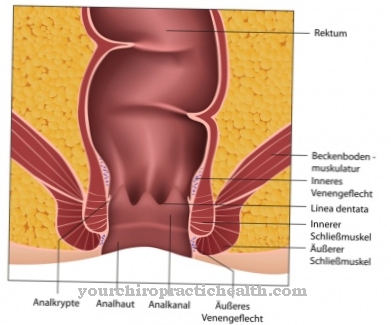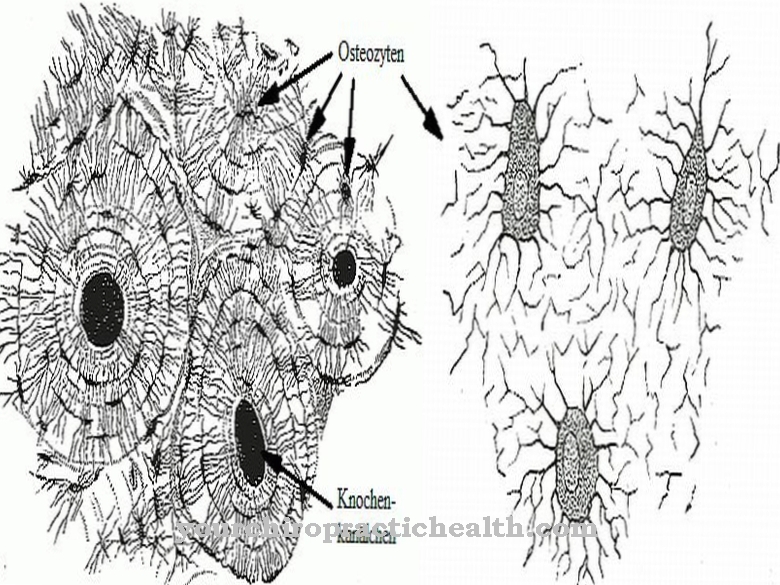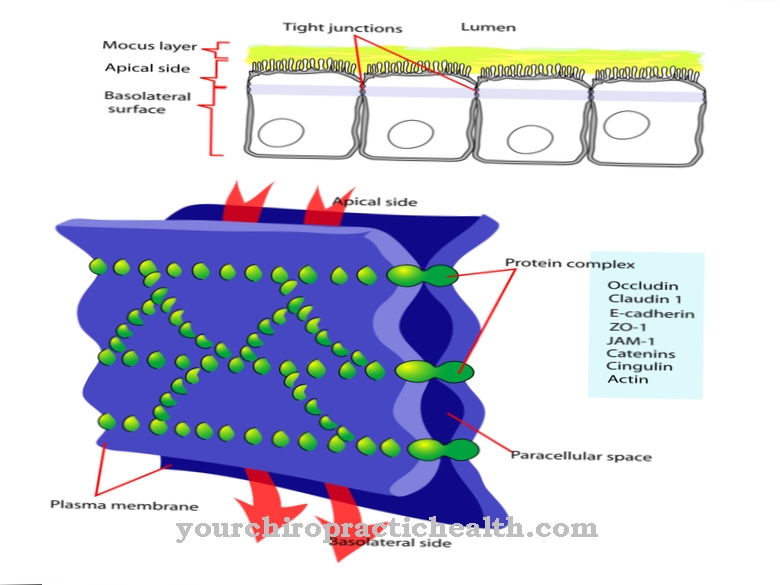As Myelin sheath is the term used to describe the sheathing of the up to one meter long neurites of a nerve cell. The myelin sheath protects the nerve fibers, insulates them electrically and allows much faster transmission speeds than non-myelinated nerve fibers. Myelin sheaths consist of special lipids, phospholipids and structural proteins and are interrupted after about one to one and a half millimeters by a so-called Ranvier ring.
What is the myelin sheath?
A nerve cell or neuron usually consists of the cell body, short processes (dendrites) close to the cell body and a neurite, which in humans can reach a length of over a meter. While the dendrites are usually not sheathed, most neurites are protected by a myelin sheath or myelin sheath and are then referred to as an axon.
Typically, the myelin sheath is interrupted after 0.2 to 1.5 millimeters in length by what is known as a Ranvier ring, so that the appearance of the axon is somewhat reminiscent of a pearl necklace with a string of elongated pearls. The myelin sheaths electrically isolate the nerve process and not only offer protection, but also allow a significantly higher speed in the transmission of nerve stimuli through what is known as saltatory stimulus transmission, which “jumps” from ring to ring.
The structural substance of the myelin sheath consists mainly of lipids such as cholesterol and phospholipids as well as special structural proteins. The structure and composition of the myelin sheaths are somewhat reminiscent of the plasmalemm, the cell membrane of human and animal cells.
Anatomy & structure
The myelin sheaths of the axons of the peripheral nervous system (PNS) are formed by Schwann cells and those of the central nervous system (CNS) by oligodendrocytes. Both types of cells belong to the group of glial cells, which take on support functions for the neurons and, like the nerve cells themselves, come from the ectoderm.
Schwann cells each wrap a section of an axon in a spiral with a myelin layer, the composition of which is exactly the same as their plasmalemm, their cell membrane. Axons can be wrapped with up to 50 double layers of the cell membrane. In the CNS, processes grow out of the soma of the oligodendrocytes, which make contact with the axons and envelop them in a myelin sheath. A dendrocyte can "wrap" axon sections of several axons at the same time.
The regular interruptions of the medullary sheaths in the form of Ranvier's cord rings at a distance of 0.2 to 1.5 millimeters play an important role in the transmission of stimuli. Ranvier's laced rings leave very narrow spaces of about one micrometer each free, where the nerve tracts are practically bare without electrical insulation.
Function & tasks
The myelin sheaths of the axons perform several functions, all of which are individually important for the interaction of the nervous system and explain its functionality. The medullary sheath offers the neurites running inside mechanical protection and at the same time electrical insulation, which is only interrupted by the Ranvier cord rings.
The regular interruptions in the isolation are of decisive importance for the speed and type of transmission of action potentials. In the resting state, the axon has the so-called resting potential inside, which is characterized by an excess of negatively charged proteins and positively charged potassium ions compared to an excess of negatively charged chloride and positively charged sodium ions in the extracellular space outside the plasma membrane of the axon. The slightly negative resting potential (membrane potential) is maintained in the membrane by ion channels and actively controllable sodium-potassium pumps.
If the nerve cell receives a certain stimulus, it is depolarized, the electrical conditions are briefly reversed and the action potential is created via voltage-controlled sodium and potassium ion channels, which, however, only lasts for about 0.1 to 0.2 milliseconds. Due to the action potential in the axon, the next following cord is depolarized and an action potential is built up.
This means that the relatively slow and cumbersome stimulus transmission is bridged by the continuous transmission of the action potential and is replaced by the sudden (saltatory) stimulus transmission from one ring to the next. The "nerve speed" increases from about 1 to 2 m / sec in neurites without a myelin sheath to up to 120 m / sec in axons with a thick myelin sheath. Another task of the myelin sheaths is to supply the nerves.
You can find your medication here
➔ Medicines for paresthesia and circulatory disordersDiseases
The most important diseases and ailments that are directly related to the myelin sheaths are diseases that lead to the breakdown and demyelination of the nerves. The demyelination of the axons - as demyelination is also called - is based either on genetic defects that are known to trigger hereditary motor-sensitive neuropathies or, for example, on the autoimmune disease multiple sclerosis (MS).
Other causes such as excessive chronic alcohol consumption, diabetic neuropathy, borreliosis or myelin breakdown as undesirable side effects of drugs are also possible causes. Hereditary motor-sensitive neuropathies are expressed as a gradual breakdown of the myelin layers or there are a priori problems with the structure or synthesis of the myelin sheaths. The genetically determined disease Krabbe's disease is a special situation because it does not lead to a breakdown of the myelin, but to an accumulation of harmful breakdown products from the myelin metabolism due to a lack of enzymes.
De-marrowing of the axons can also occur due to toxic effects or a deficiency in certain B vitamins such as B6 and B12, which alcoholics often suffer from. The autoimmune disease MS, the causes of which are not (yet) fully understood, is relatively common in Central Europe and affects women about twice as often as men. The chronic inflammatory disease of the CNS leads to multiple or multiple (multiple) zones in the white matter, which are affected by demyelination with the resulting symptomatic consequences.









.jpg)

.jpg)





.jpg)










